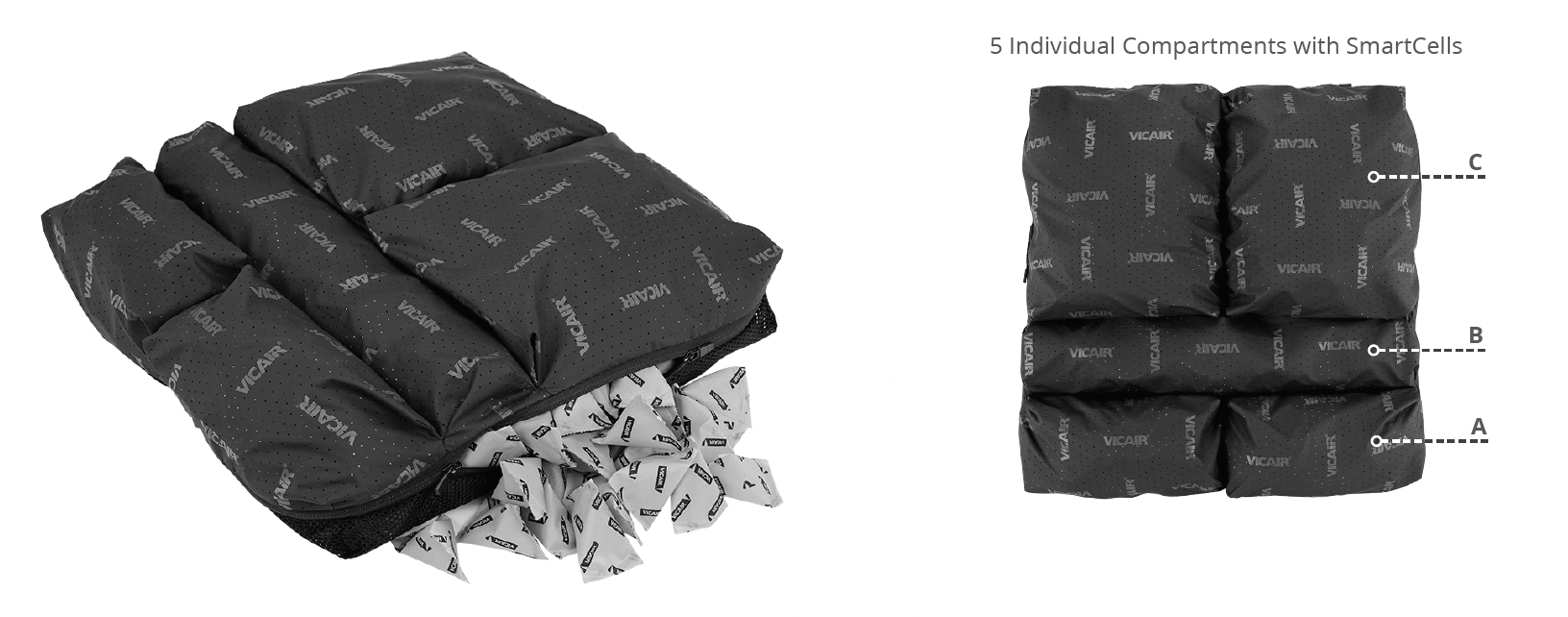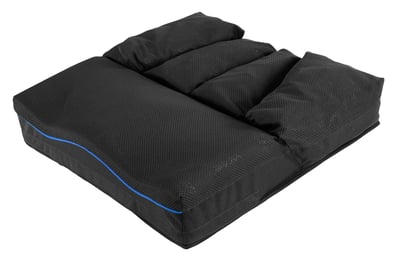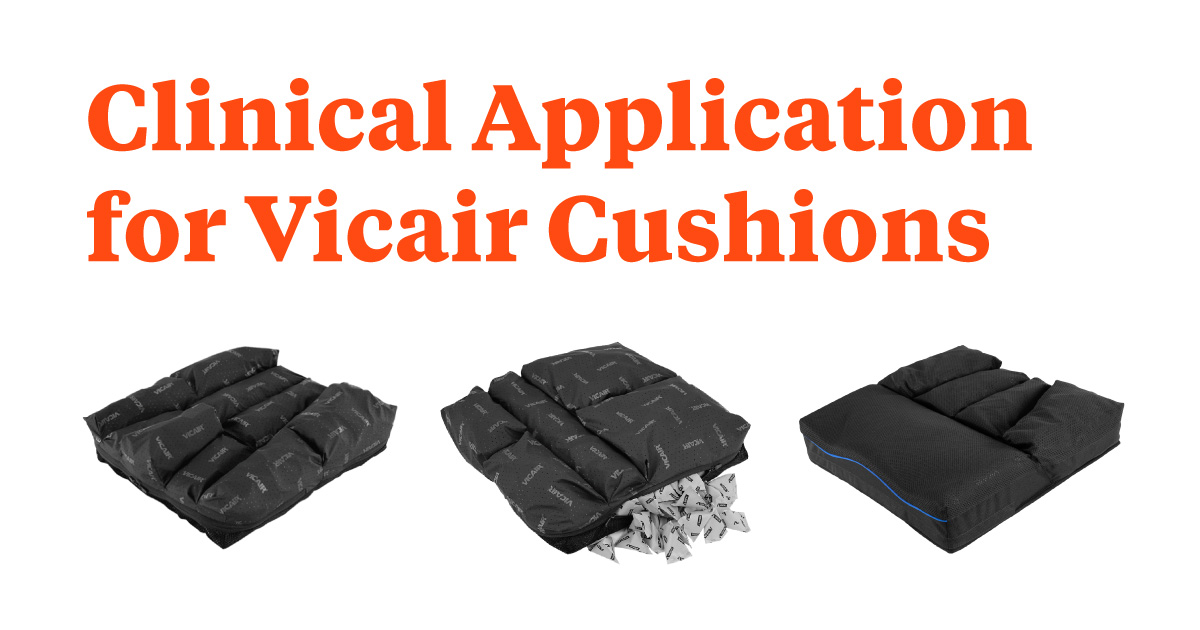Looking for more information on seating and positioning? Check out our digital page all about Permobil seating and positioning products here. This is part 9 of our series on seating and positioning. See part 1, part 2, part 3, part 4, part 5, part 6, part 7, and part 8.
When assessing a cushion, I always recommend looking at the method of pressure distribution, the geometry and the medium.
Methods of Pressure Redistribution
It’s easy to think that a skin protection cushion should be soft and cushy and cradle the skin. But in reality, it’s all about redistributing pressure over a larger surface area to decrease high peak pressures in just one area. There are different methods of pressure redistribution:
Geometry
The best way to assess the geometry of a cushion is by feeling it. Not only sitting on it but taking the cover off and running your hand from side to side and front to back, feeling the contours. When it comes to Vicair cushions the cells will shift and move with your hand, but you will be able to see and feel the inherent contours of the cushion.
Medium
The medium of a cushion refers to what the cushion is made of. There are multiple options that manufacturers use and each has its benefits and considerations.
- Foam
- Air
- Honeycomb
- Gel/Fluid inserts
- Combination
It’s important to remember the functional and postural goals of your client when considering the medium. Think of the weight of the cushion since each medium has different properties making them lighter or heavier. Each medium also has different qualities that affect the stability of the surface, which can affect the ease of transfers, pelvic posture, and sitting tolerance. How each medium (i.e. air, foam, etc) is used in the cushion, as well as the quality and design of the materials used, impact the interaction between the cushion and the user.
Now that we've gone over methods of pressure distribution, cushion geometry, and cushion medium, let’s look at the clinical application of the models of Vicair cushions:
 Method of pressure Distribution: Partial Offloading
Method of pressure Distribution: Partial Offloading
Geometry: Contoured
Medium: Static Air through SmartCells
Clinical Indication: A lightweight high quality skin protection option with a soft end feel yet stable enough for slide board transfers. Contours with rear raised compartments load trochanters to provide pelvic stability. The contours are adjustable by adding/removing SmartCells to accommodate or correct for postural asymmetries.
 Method of Pressure Distribution: Immersion
Method of Pressure Distribution: Immersion
Geometry: Linear
Medium: Static Air through SmartCells
Clinical Indication: A lightweight high quality skin protection option with a soft end feel yet stable enough for slide board transfers. The linear style can accommodate all body types and postural asymmetries.
 Method of Pressure Distribution: Partial Offloading
Method of Pressure Distribution: Partial Offloading
Geometry: Contoured
Medium: Combination of SmartCells in the rear and foam in the front
Clinical Indication: A high quality skin protection option with cells in the rear and foam in the front making it stable for slide board transfers, and for pushing up during transfers. Contours in the lateral rear compartments load the trochanters, offering pelvic stability.
Infection Control and Hygiene
These days infection control and hygiene have never been more relevant and important. An important feature for all Vicair cushions is that they are *machine washable with the cells remaining in the compartments. I recommend removing the cover, zip tying the zippers to keep the cells in and putting the cushion in the washing machine. This is an easy way to maintain the cleanliness of the cushion and controlling the possible threat of infection.
*Covers must be removed and washed according to instructions. In Vicair Active O2, the foam must be removed from the liner before placing in washing machine.

